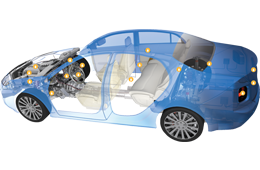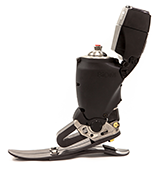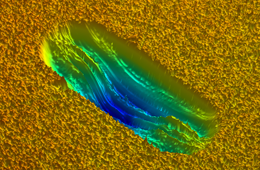Nye Lubeletter - November 2016
 Automotive Lubricants for Electrical Applications
Automotive Lubricants for Electrical Applications
 Nye engineers design lubricants to extend the operating life of electrical connector, sensor and switch components for the automotive industry. Our Automotive Lubricants for Electrical Applications video demonstrates which lubricants are ideal for use in the powertrain, exterior, interior, and chassis applications of a car. Learn which Nye greases are recommended for these applications.
Nye engineers design lubricants to extend the operating life of electrical connector, sensor and switch components for the automotive industry. Our Automotive Lubricants for Electrical Applications video demonstrates which lubricants are ideal for use in the powertrain, exterior, interior, and chassis applications of a car. Learn which Nye greases are recommended for these applications.
![]()

NSF Certified From Source to Tap
 Ensuring safe and healthy drinking water is a priority. Strict standards for drinking water system components have been established by the NSF to minimize chemical contaminants and impurities that can be directly imparted to potable water from products, compounds, and materials used in drinking water systems. Our new Potable Water Lubricant Infographic showcases Fluorocarbon Gel 880FG, an NSF/ANSI 61 approved lubricant to be used in drinking water applications from source to tap. The NSF certification allows Nye to sell this product for commercial water treatment and drinking water for both hot and cold water applications.
Ensuring safe and healthy drinking water is a priority. Strict standards for drinking water system components have been established by the NSF to minimize chemical contaminants and impurities that can be directly imparted to potable water from products, compounds, and materials used in drinking water systems. Our new Potable Water Lubricant Infographic showcases Fluorocarbon Gel 880FG, an NSF/ANSI 61 approved lubricant to be used in drinking water applications from source to tap. The NSF certification allows Nye to sell this product for commercial water treatment and drinking water for both hot and cold water applications.
![]()

Enabling Smart Technology
 Nye was contacted by iWalk, now known as BionX™ Medical Technologies Inc., a leader in the field of prosthetic devices. The company was working on designing powered “smart” prostheses, in particular an ankle prosthetic. Their design used a small precision ball screw to continually adjust the angle of the prosthetic foot relative to the lower leg. The ball screw is actuated by a battery powered electric motor. iWalk needed our help in maximizing the life of the ball screw while keeping the battery size small. Download our case study to learn how a Nye lubricant helped minimize the amount of energy needed to actuate the ball screw, while prolonging the operation time of the battery. Printed by permission of BionX™ Medical Technologies Inc.
Nye was contacted by iWalk, now known as BionX™ Medical Technologies Inc., a leader in the field of prosthetic devices. The company was working on designing powered “smart” prostheses, in particular an ankle prosthetic. Their design used a small precision ball screw to continually adjust the angle of the prosthetic foot relative to the lower leg. The ball screw is actuated by a battery powered electric motor. iWalk needed our help in maximizing the life of the ball screw while keeping the battery size small. Download our case study to learn how a Nye lubricant helped minimize the amount of energy needed to actuate the ball screw, while prolonging the operation time of the battery. Printed by permission of BionX™ Medical Technologies Inc.

Tribological Testing by Profilometer
In previous editions of the LubeLetter, we described the importance of Tribology, the science of friction, wear and lubrication, and how the tribological properties of a lubricant can be measured. This issue takes a closer look into the measurement of one of those key properties, the wear scars generated by the 4-Ball Wear and SRV tests. Wear scars are typically reported based upon a two-dimensional measurement of scar length and width using an optical microscope. At Nye, our laboratory scientists use an optical Profilometer to measure this third dimension of a scar. By including depth, the volume of the wear scar can be determined providing a thorough wear scar analysis.
![]()


